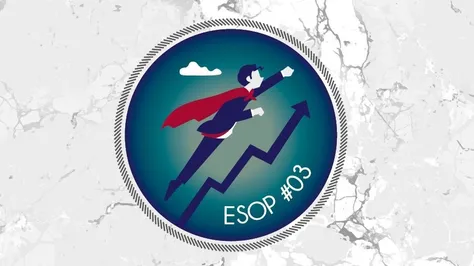In the third issue of Lex ESOP, we are abandoning the contractual establishment of an employee stock ownership plan, moving on to generally more sophisticated and robust solutions. These are ESOPs based on (debt) securities and shareholding. What should be considered in relation to these options? What are the differences? These are the questions we are addressing in today’s blog post.
The first issue of Lex ESOP provided a basic introduction to ESOPs, presenting the basic breakdown of these plans according to whether they include the handling of a certain shareholding, security or whether the ESOP has a purely contractual basis. The second issue focused on the last option.
In this article, you will get an introduction to the basics of ESOPs that are established by creating an entirely new security benefiting the manager, or by an existing shareholder transferring part of the shareholding in the target company to the manager. To simplify the following text, we shall only look at shareholdings in a joint-stock company. This company form is a more frequent vehicle to establish this type of ESOPs, but above all, the shareholding in it is also incorporated in a security – a share of stock. Therefore, it will be possible to illustrate the difference between the shareholding securities (shares of stock) and other debt (“ordinary”) securities that do not include an ownership interest in the company.
Securities vs. shareholding
What is the primary difference between a mere debt security and a share of stock? A manager holding the former will only be entitled to certain monetary performance from the company. To put it simply, it is similar to a bond, which is easier for everyone to imagine. The yield of such a security can be linked to completely objective KPIs, i.e. criteria that can be used to measure the performance of the company, of the manager, and ultimately the contribution of his role to the company or the group as a whole.
However, such a security will not allow the manager to participate in the company’s management as its shareholder. This will not give him the right to participate in general meetings and vote on the company’s further strategic direction, participate in important decisions of shareholders, etc.
On the other hand, the existing majority (or sole) shareholder does not have to share the ownership interest in the company with the manager. At the same time, there is no risk of the manager abusing his newly acquired shareholder rights (however, this can also be regulated by contract). Essentially, the company’s owner needs to decide to which extent he wishes to integrate the manager in the management of the company or the entire structure. Of course, we can generally say that the more closely the manager is involved in the company’s management and co-determining of its future, the more motivated he will be and the lower the risk will be that he quits.
Lex ESOP #2 mentioned that even an ESOP included only in a director’s service agreement can establish some form of a regular bonus depending on the achievement of KPIs. What is the major difference between a contractual plan and the plans described here? Again, the “traffic lights” can help us understand it:

Both the shareholding and the security provide a higher degree of incentive. The first reason is that the manager holding the given type of security issued by the company will feel a greater degree of belonging to the company. The second reason is that when implementing an ESOP, holding a security may offer better conditions for the bonus plan. For example, the manager may be entitled to receive performance in the form of an option to have the company, or another person, buy the security from him (options will be discussed in the upcoming issues).
The redemption may occur after several years of hard work by the manager, after which the value of the security can be expected to be higher as the market value of the company has increased (typically in the case of holding shares of stock), or the security can now be expected to earn a higher return into the future (typically in the case of a debt security). Such final performance for the resale of a security may also be better for the manager in term of his taxes, as opposed to the payment of a bonus under the director’s service agreement (but this will also be discussed in more detail in the issues to come).
This makes the manager motivated not only to pursue short-term high profits (from which he will benefit immediately), but also to ensure that such profits are sustainable in the long run and that his moral hazard does not increase when managing the corporation (since at the end of the ESOP, he is also bound to benefit from the long-term increased value of the company). This is also why securities and shareholdings outperform a pure management bonus established by a contractual arrangement in terms of providing long-term stability.
Shareholding flexibility limits
The recodification of private law effective since 2014 has brought great liberalisation as regards the possibility of creating completely new types of debt securities and shares in joint-stock companies (as well as shares in limited liability companies). As a result, the two instruments may converge to better match the majority owner’s idea of the appropriate form of the ESOP.
For example, the owner can create shares that include the right to receive yields and to participate in the general meeting, but do not allow the manager to vote there (or only in selected cases), or his voting right is limited. With growing years of service, his shares will only gradually become ordinary shares. And vice versa. Ordinary securities may also include rights that will effectively give the manager a future opportunity to obtain shareholding in the company, perhaps based on years of his service and the achievement of various performance criteria. Even in this case, the manager can only gradually be granted shareholding to incentivise him to work in the long run to eventually obtain a fully-fledged shareholding in the company.
However, shareholding naturally entails certain risks of future litigation. These can be significantly regulated by contract, but you can never legally exclude a conflict between the manager and the majority shareholder. Shareholder disputes can be unpleasant for both parties. The coming issues will look at handling this risk, by, among other things, discussing possible scenarios such as when the manager acquires a direct or indirect stake in the target company, or when he leaves the company in bad faith. We look forward to seeing you again at the next issue of Lex ESOP.












